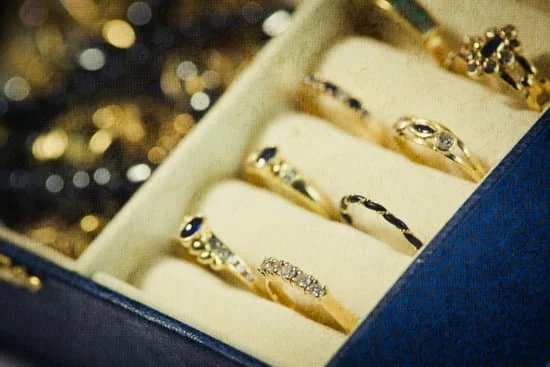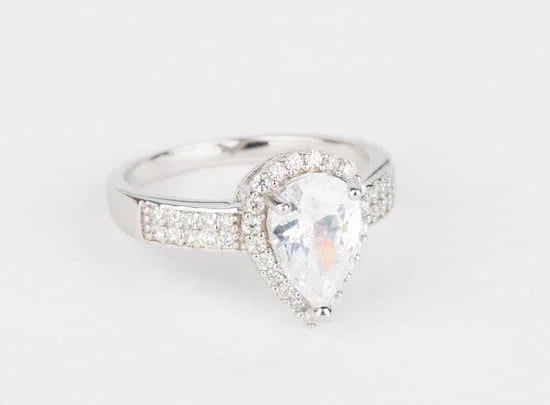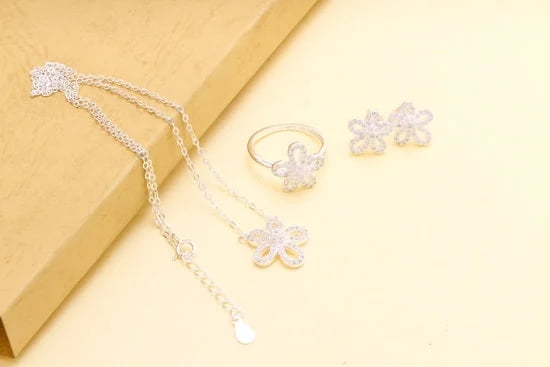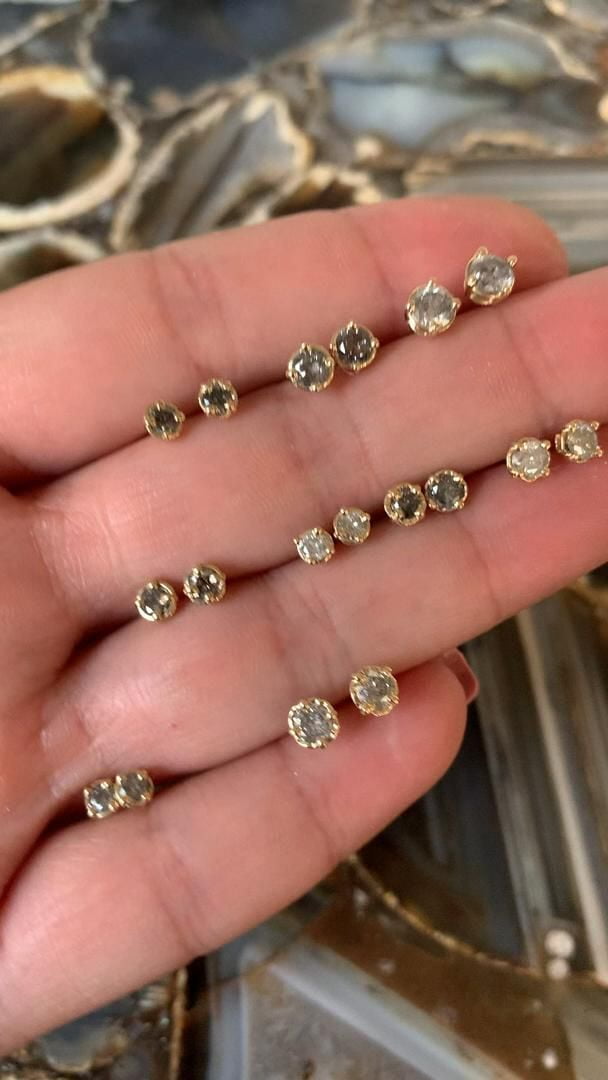What is the retail markup on fine jewelry? The cost of production and factors influencing retail pricing are important to understand for consumers looking to purchase luxury items such as fine jewelry. This article will delve into the complex world of retail markups on fine jewelry, providing insight into how these prices are determined and tips for consumers on how to navigate this market.
Fine jewelry is a luxury item that holds both sentimental and monetary value. The retail markup on these items can be quite high, but understanding the reasons behind it can help consumers make informed purchasing decisions.
In this article, we will explore the cost of fine jewelry production, factors that influence retail markup, the role of branding in pricing, and the impact of retail location. We will also compare markups on different types of fine jewelry such as diamonds, gold, and platinum.
Consumers often have varying perceptions of fine jewelry pricing, which may be influenced by marketing tactics and consumer behavior. By gaining a better understanding of the value and markup associated with fine jewelry, consumers can navigate the market more confidently.
Understanding the Cost of Fine Jewelry Production
Producing fine jewelry involves several costs, including the materials used, production labor, and overhead expenses. These costs ultimately contribute to the retail markup on fine jewelry. Understanding the intricacies of fine jewelry production can shed light on why retail prices are set at a certain level.
Materials Used
Fine jewelry is often crafted from precious metals such as gold, silver, and platinum, as well as gemstones like diamonds, rubies, and sapphires. The cost of these materials can vary depending on factors such as purity, grade, and rarity. For example, 24-karat gold will be more expensive than 14-karat gold due to its higher purity.
Production Labor
Skilled artisans are often employed to handcraft fine jewelry pieces. Their expertise and craftsmanship command higher wages, which contributes to the overall cost of production. In addition to creating the design itself, additional labor may be required for setting stones and adding intricate details to the jewelry.
Overhead Expenses
The production process also incurs overhead expenses such as rent for workshop spaces, utilities, insurance, and other operational costs. These expenses add up and are factored into the retail price of fine jewelry.
Understanding these aspects of fine jewelry production provides insight into what influences the retail markup on fine jewelry. By comprehending the various costs involved in producing fine jewelry, consumers can better appreciate the value of these exquisite pieces.
Factors That Influence Retail Markup on Fine Jewelry
When it comes to the retail markup on fine jewelry, there are several factors that come into play. Understanding these factors can help consumers make informed decisions when purchasing fine jewelry.
1. Quality of Materials: The quality of materials used in creating fine jewelry plays a significant role in determining its retail markup. For example, a piece of jewelry made with high-quality diamonds and 18K gold will generally have a higher markup compared to a piece made with lower quality stones and metals.
2. Brand Reputation: The reputation of the brand behind the jewelry also influences its retail markup. Well-established luxury brands often command higher markups due to their brand prestige and recognition among consumers.
3. Design and Craftsmanship: The intricacy of the design and level of craftsmanship involved in creating the jewelry can impact its retail markup as well. Handcrafted pieces or those with unique designs may have higher markups compared to mass-produced items.
4. Market Demand: Market demand for certain types of fine jewelry can affect its retail markup. Jewelry that is currently trending or in high demand may be priced at a premium due to market forces.
Understanding these factors can help consumers make more informed decisions when purchasing fine jewelry, ultimately ensuring they are getting the best value for their money. By considering these factors, consumers can navigate the world of fine jewelry retail markup more effectively.
The Role of Branding in Fine Jewelry Retail Markup
When it comes to the retail markup on fine jewelry, branding plays a significant role in determining the final price of a piece. Brand recognition and reputation are powerful factors that can justify higher price points for fine jewelry. A well-established brand with a strong presence in the market can command a higher markup, as consumers perceive these pieces to be of higher quality and prestige.
Luxury brands, in particular, often have a much larger retail markup on their fine jewelry compared to non-branded or lesser-known brands. This is because luxury brands invest heavily in marketing, advertising, and creating an aura of exclusivity around their products. As a result, consumers are willing to pay a premium for the brand name associated with the jewelry.
Additionally, branding also influences consumer perception of value. Studies have shown that consumers are often willing to pay more for a piece of fine jewelry if it carries the logo of a prestigious brand, even if the actual production cost does not significantly differ from that of a non-branded piece. This psychological aspect of branding further justifies the higher retail markup on branded fine jewelry.
| Branding Influence | Retail Markup |
|---|---|
| Strong Brand Recognition | Higher Markup |
| Luxury Brands | Larger Retail Markup |
| Consumer Perception | Influenced by Branding |
Overall, branding is a key factor in determining the retail markup on fine jewelry. It not only influences pricing but also shapes consumer behavior and perception. As such, understanding the impact of branding is crucial for both producers and consumers when navigating the world of fine jewelry retail markup.
The Impact of Retail Location on Fine Jewelry Pricing
When it comes to the retail markup on fine jewelry, one factor that plays a significant role in pricing is the location of the retail store. The physical location of a jewelry store can have a substantial impact on the costs associated with operating the business, which in turn can influence the pricing of the jewelry being sold. Here are some ways in which retail location can impact fine jewelry pricing:
Factors Influencing Fine Jewelry Pricing Based on Retail Location:
- Overhead Costs: The cost of operating a retail space in a prime location such as a high-end shopping district or luxury mall is significantly higher than operating in a less prestigious area. This means that overhead costs, including rent, utilities, and other expenses, are factored into the pricing of fine jewelry to make up for these elevated operational costs.
- Target Customer Base: Retail locations often cater to specific demographic groups based on their location. A store situated in an affluent neighborhood may target high-net-worth individuals, allowing them to set higher prices for their fine jewelry due to the spending power and willingness to pay more among their customer base.
- Competition: The level of competition in a particular retail location can also influence pricing. In areas where there is intense competition among multiple fine jewelry retailers, prices may be more competitive as stores strive to attract customers and stand out from their rivals.
The impact of retail location on fine jewelry pricing is therefore substantial and should be taken into consideration when evaluating the markup applied to pieces. Understanding how this factor influences pricing can help consumers make informed decisions when shopping for fine jewelry.
Comparing Retail Markup on Different Types of Fine Jewelry (Diamonds, Gold, Platinum, Etc)
When it comes to the retail markup on fine jewelry, it’s important to understand that different types of jewelry materials can have varying markups. This section will focus on comparing the retail markup on different types of fine jewelry, including diamonds, gold, platinum, and other materials.
Diamonds
Diamonds are one of the most popular and sought-after materials for fine jewelry. The retail markup on diamonds can vary significantly depending on factors such as the quality of the diamond, its size, and any additional features such as certification or branding. In general, the retail markup on diamonds can range from 50% to 200%, with higher quality and larger diamonds typically having a higher markup.
Gold
Gold is another highly coveted material for fine jewelry, known for its timeless appeal and inherent value. The retail markup on gold jewelry can also fluctuate based on factors like purity (measured in karats), design intricacy, and brand reputation. Generally, the retail markup on gold jewelry falls within the range of 20% to 80%, with higher karat gold and designer brands commanding a higher markup.
Platinum
Platinum is a rare and durable metal that is often used in fine jewelry due to its strength and lustrous appearance. The retail markup on platinum jewelry tends to be higher than that of gold or silver due to its scarcity and desirability. On average, the retail markup on platinum jewelry can range from 100% to 300%, making it one of the highest-marked up materials in the fine jewelry industry.
When considering the purchase of fine jewelry made from different materials, it’s crucial for consumers to understand how each material’s unique qualities influence its retail markup. By being informed about these differences, consumers can make more educated decisions when investing in fine jewelry pieces.
Consumer Perception of Fine Jewelry Pricing
When it comes to purchasing fine jewelry, consumers often wonder what the retail markup on these luxury items actually is. The retail markup on fine jewelry can vary significantly depending on various factors such as production costs, branding, and even the location of the retail store. It’s essential for consumers to understand these factors in order to make informed decisions when buying fine jewelry.
One of the major influences on the retail markup of fine jewelry is the cost of production. Fine jewelry, particularly items made with precious metals and gemstones, can be quite expensive to produce. The cost of materials, labor, and craftsmanship all contribute to the final price that consumers see in retail stores. In addition to production costs, other factors also play a role in determining the retail markup on fine jewelry.
Branding is another significant factor that affects the retail markup on fine jewelry. Established luxury brands often command higher prices due to their reputation for quality, craftsmanship, and exclusivity. Consumers are often willing to pay more for fine jewelry from well-known brands because of this perceived value. However, newer or lesser-known brands may offer similar quality at a lower retail markup in an effort to compete in the market.
| Factors | Impact on Retail Markup |
|---|---|
| Cost of Production | Significant influence; expensive production costs lead to higher retail markups |
| Branding | Established luxury brands command higher prices due to reputation and perceived value |
Tips for Consumers on How to Navigate Fine Jewelry Retail Markup
When it comes to purchasing fine jewelry, understanding the retail markup can be crucial for consumers. The retail markup on fine jewelry can range from 50% to as high as 100% or more. It’s important for consumers to be aware of this when shopping for fine jewelry, as it can impact their purchasing decisions.
One tip for consumers on how to navigate fine jewelry retail markup is to educate themselves about the cost of production. Understanding the factors that contribute to the cost of producing fine jewelry, such as the price of raw materials and labor, can give consumers a better idea of what a fair retail price should be. By doing research and comparing prices from different retailers, consumers can ensure they are not overpaying due to excessive markups.
Another tip is to consider purchasing fine jewelry from independent or smaller retailers. These retailers often have lower overhead costs compared to larger chain stores, which can result in more competitive pricing for the same quality of jewelry. Additionally, independent retailers may offer unique and customizable options that can provide added value for consumers.
Lastly, consumers should not be afraid to negotiate when buying fine jewelry. Some retailers may be willing to negotiate on pricing, especially if they see a serious and informed buyer. Being aware of the retail markup and being prepared to negotiate can help consumers get the best value for their money when purchasing fine jewelry.
Conclusion
In conclusion, the retail markup on fine jewelry can vary significantly depending on various factors such as production costs, branding, and retail location. Understanding these aspects can help consumers better grasp the value of the jewelry they are purchasing.
The cost of production for fine jewelry includes not only the materials used, but also the craftsmanship and time involved in creating the piece. Factors such as brand reputation and exclusivity can also contribute to a higher retail markup. Additionally, retail location plays a significant role in pricing, as overhead expenses and target demographics can influence the final price tag.
It’s important for consumers to be aware of these factors when navigating the world of fine jewelry retail markup. By understanding the value behind each piece and considering the various influences on pricing, consumers can make more informed purchasing decisions. Whether it’s diamonds, gold, platinum, or other types of fine jewelry, being an educated consumer is key to getting the best value for their investment in these timeless pieces.
Frequently Asked Questions
What Is the Typical Markup on Fine Jewelry?
The typical markup on fine jewelry can vary depending on the retailer, but it generally falls within the range of 50% to 100%. This means that if a piece of fine jewelry costs $500 to produce, it could be sold for anywhere from $750 to $1000.
What Is the Profit Margin on Fine Jewelry?
The profit margin on fine jewelry is typically around 25% to 30%. This means that after accounting for the cost of materials, labor, and other expenses, a jewelry retailer can expect to make a profit of about 25-30% on each piece sold.
What Is the Profit Margin on Diamond Ring?
The profit margin on a diamond ring can also vary, but it generally falls within the same range as fine jewelry overall, around 25% to 30%. Since diamond rings are often more expensive and in higher demand, retailers may have slightly higher margins on these pieces. However, operational costs and competition can also impact the final profit margin.

Welcome to my jewelry blog! My name is Sarah and I am the owner of this blog.
I love making jewelry and sharing my creations with others.
So whether you’re someone who loves wearing jewelry yourself or simply enjoys learning about it, be sure to check out my blog for insightful posts on everything related to this exciting topic!





